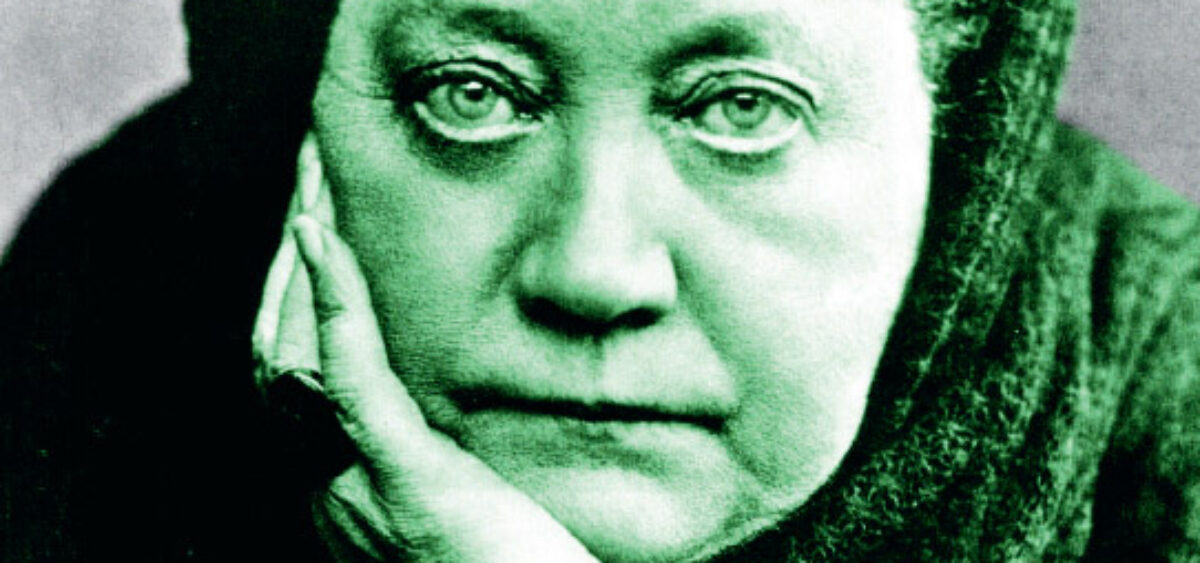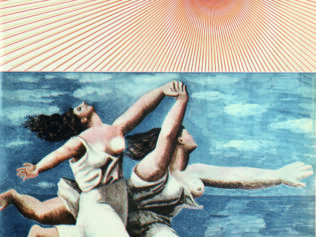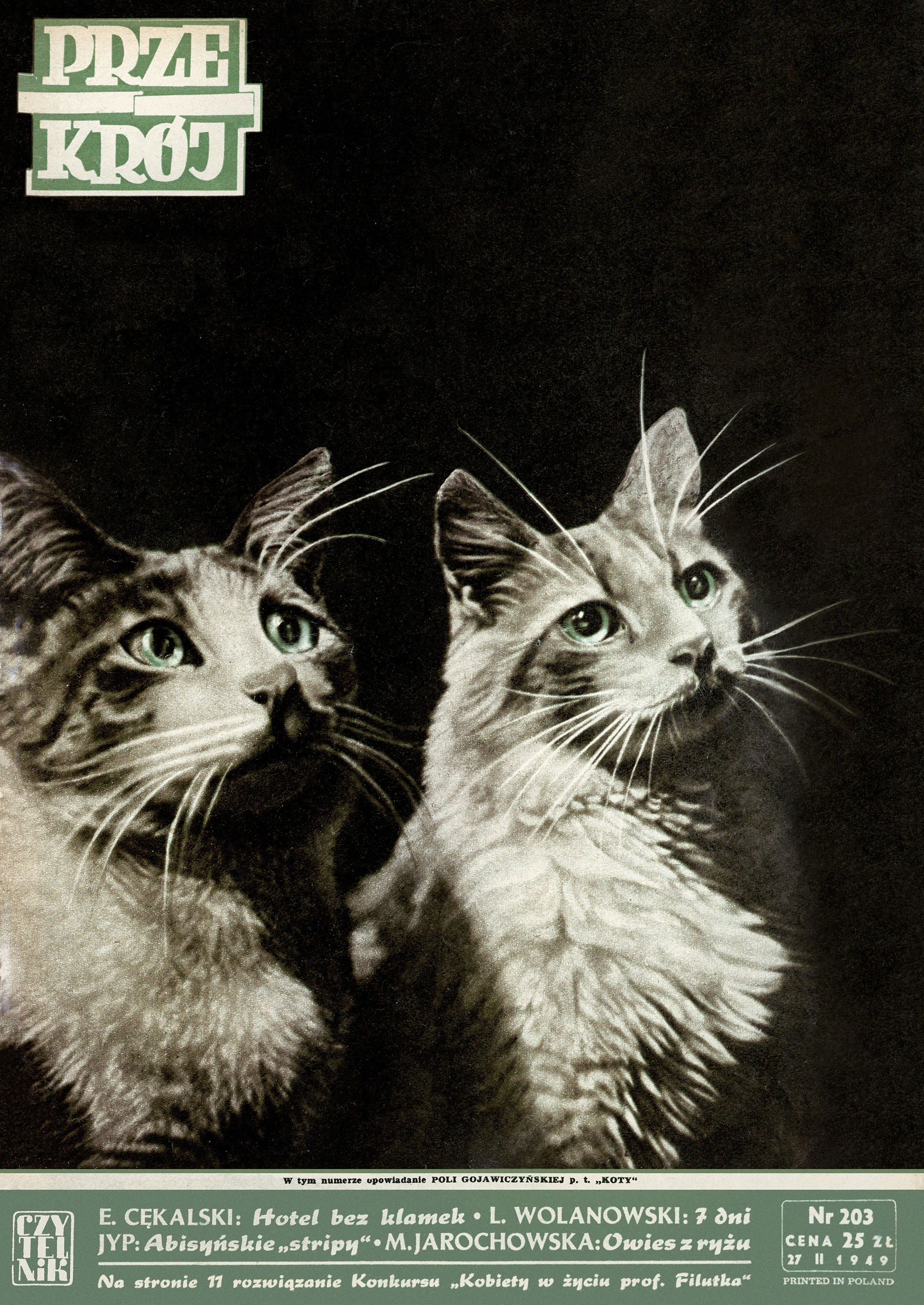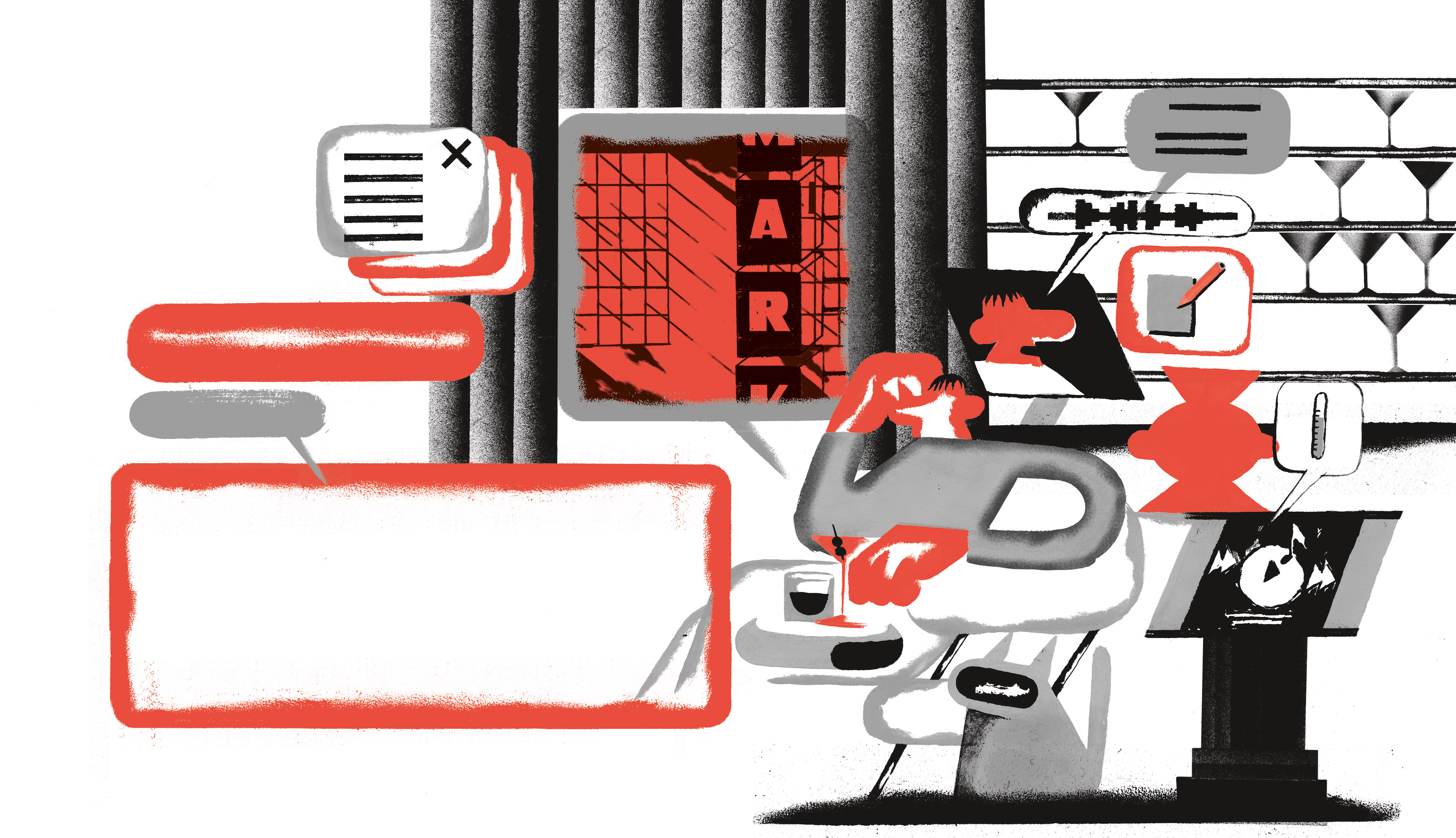
Who was the most mysterious woman of the age of steam and electricity? An ingenious fraud, an enlightened sage, or maybe just a skilled writer? That’s the million dollar question.
What was the first impulse? How did it all start, and when did it start?
There are many answers to choose from. Such as aeons ago. Somewhere in Atlantis. In the vast spaces of the astral spheres. One way or another, it was all planned by a brotherhood of invisible sages who control humanity from behind the scenes.
Or perhaps – we cannot rule this possibility out either – it was neither far away nor long ago. Precisely speaking: in Russia, in the year 1838. That’s when seven-year-old Helena Petrovna Blavatsky arrived in Astrakhan. She was born in Ukraine; her mother, Helena von Hahn, was a promising Russian novelist, and her father Peter von Hahn was a cavalry officer in the Tsar’s army. Astrakhan, nestled in the Volga Delta, was where Helena’s maternal grandfather Andrei Fadeyev worked as a civil administrator to the local Kalmuck tribes, consisting mostly of Tibetan Buddhists. One day, Kalmuck leader Prince Tumen took little Helena and her mother to a small local temple. The girl found herself surrounded by Tibetan lamas throatily chanting their holy mantras in deep meditation, shrouded with a blanket of thick incense smoke. For the first time in her life, she felt the magnetic tug of the Orient. She would often emphasize the importance of this visit; her spiritual initiation of sorts.
But perhaps the real beginning took place several years later? One day, teenage Helena – who after her mother’s passing was staying with her family in Saratov, near the Russia-Kazakhstan border – discovered a vast library, previously owned by her great-grandfather, Prince Pavel Vassilyevich Dolgorukov. There she found hundreds of decaying books by the 16th- and 17th-century masters of alchemy and hermetic philosophy, such as Paracelsus, Heinrich Cornelius Agrippa, and Heinrich Khunrath. Helena’s great-grandfather (a high-ranked Freemason who in the 1770s was initiated into the Rosicrucian mysteries) selected the books for his collection with meticulous care. Helena devoured them with passion, and it wasn’t long until she became an expert in the field of occultism.
Again: was it all a mere coincidence, or perhaps a result of an intervention of some higher powers? Maybe it was decided by the Karmic law that controls the world and all who live in it, as described by Blavatsky years later in The Secret Doctrine, her opus vitae? Does it mean it was no accident Fadeyev was sent to Astrakhan? Could Dolgorukov foresee that decades later, his great-granddaughter would discover his library?
We could keep asking such questions forever. The life and work of Helena Blavatsky – the founder of the Theosophical Society, prolific author, avid traveller and the great lady of occultism worldwide – is indeed a perfect amalgamate of facts and imagination that blur the thin line between reality and fiction. The stories about her adventures and views read like fantasy novels, or perhaps a mythical tale; a great literary mystification even, in which the main character and the writer turn out to be the same person.
However, one thing can be said without a shadow of a doubt. If not for Helena Blavatsky, we would all be living in a radically different culture today. Nobody has left a more impressive mark on the contemporary Western spirituality and imagination than her. Yet her contribution remains unheard of and astonishingly unappreciated. She was the first to offer an elaborate and universally appealing vision of human life and of the universe, which became an alternative for the worldview revolution brought by the 19th-century scientific progress that hailed materialism and evolutionism.
Theosophy managed to gain numerous followers and ignite a great 20th-century renaissance of magic. It became the foundation for the 1960s counter-culture, New Age, Western fascination with Buddhism and Hinduism, and last but not least, the creation of Star Wars. Before all those things could happen, one new marriage had to fall apart first.
And maybe that’s the moment when the story takes off.
An escape to more escaping
Nobody understood why the 17-year-old Blavatsky decided to get married.
She had been living in Tiflis (modern-day Tbilisi) for a while, as her grandfather Andrei had been offered another administrative job there. And for the past year, Helena had been living a strange, double life. During the day, she was a regular teenage girl, but at night her soul left the body and embarked on long journeys across the astral sphere. This subtle, invisible reality is parallel to the physical world, and it is inhabited by all kinds of creatures and spiritual energies. Helena had done her reading; she could recognize and name all those beings. During her spiritual travels, she met a mysterious Hindi man, who would soon become one of the most important people in Helena’s life. But for the time being, the girl has no idea whether her experiences were anything more than an elaborate dream.
The only person she could tell about her spiritual adventures was Prince Alexander Golitsyn, a colourful character and a frequent guest at Helena’s grandparents’ house. Golitsyn was a Freemason and a practising mage, whose search for ancient occult secrets had led him to travel to Greece, Iran, India, Egypt, and numerous other places. We don’t know much about his relationship with Helena, but without doubt, it is Golitsyn who instilled the yearning for faraway travels in her. Helena wanted to seek out the unknown, the magical, the mysterious.
Around that time, someone else appeared in the periphery of Helena’s life. Forty-something Nikifor Blavatsky, the governor of Yerevan, began paying visits to the Fadeyev family. It is clear that Mr. Blavatsky took an interest in young Helena, who (unexpectedly) accepted his proposal. The family regarded this turn of events with sheer disbelief. This eccentric young lady, who swore she’d never marry, suddenly agrees to wed without as much as batting an eyelid? Unbelievable.
Helena had a good reason to marry Nikifor. As she stated in one of her letters, he was the only man (apart from the prince) who took her interest in magic seriously. It was enough to turn the odds in his favour. Not for long, as it would soon transpire.
The bride started plotting her escape from marriage remarkably early: during the wedding ceremony that took place on 7th July 1849. Three months later, she was already gone. Her plan was simple. All she had to do was mount a horse and ride back to Tiflis, to her grandparents’ house. Soon after her arrival, Helena bought passage on a ferry bound for Saint Petersburg, telling the family she was planning to meet her father there. This was a lie. Helena dressed up as a cabin boy and made her way to Istanbul, at that time still known as Constantinople. Some say she made the last leg of the journey crossing the Bosphorus Strait in a kayak, under cover of night.
Wisdom among the pyramids
Upon her arrival in Constantinople, Madame Blavatsky entered a world she only knew from books: full of esoterics, mystics, mages, and dervishes. It was in Constantinople that she came up with the idea to seek ‘Those Who Know’ – the sages hidden from the eyes of mere mortals; spiritual masters, the guides of humanity who who have found the higher wisdom, and can only be accessed by the chosen ones. Helena’s father and her abandoned husband both kept sending her money. Their generous remittances would fund many years of her travels.
Helena soon left Constantinople and went first to Greece, and then to Cairo. She was following the footsteps of the ancient sages she’d read about in the books she’d found in her grandfather’s library. It is said that both Pythagoras and Plato travelled to Egypt in search of some secret wisdom, as did Christian Rosenkreutz, the legendary founder of the Rosicrucian Order. Rosenkreutz would later become a significant figure in Helena’s theosophic work.
In Cairo, she met Albert Rawson, an American artist and traveller who harboured a great interest in secret wisdom. Years later, Rawson would describe their time together in this city in detail. According to Rawson, Blavatsky frequently smoked hashish, which was very easy to obtain in Egypt. A century later, her love for this substance would make Blavatsky a popular figure in the hippie movement. Rawson also introduced Helena to Paulos Metamon, an enigmatic and secretive figure. Metamon was a Copt and a Kabbalist said to possess supernatural abilities. Blavatsky went to meet him at night, disguised as a Muslim boy. We know the mage showed Helena his collection of astrological texts, but the rest of their meeting remains a secret. Some researchers believe Metamon was one of the major patrons of the Theosophical Society, one of the Masters with whom Madame Blavatsky was said to remain in touch telepathically for most of her life. However, Blavatsky herself never confirmed this theory.
Her first official meeting with a real Master took place many months later in London, where Helena arrived straight from Paris, another stop on her restless journey after Cairo.
Master Morya and Master Yoda
The idea of a secret order of spiritually advanced beings who somehow control the history of humanity had been circulating in Western culture long before Madame Blavatsky came along. More precisely, it all began in the 17th century. In 1612, in the German city of Kassel, an anonymous brochure was published. It was a manifesto of the Rosicrucian Order, an organization nobody had ever heard of before. The manifesto claimed that Medieval occultist Christian Rosenkreutz had founded an order that gave its members access to the universal, mystical truth about human nature and the ways of the world. Two years later, another manifesto was released, called The Chymical Wedding of Christian Rosenkreutz. Rosenkreutz, the hero of the story, is presented as Hermes Trismegistus, a god of Hellenic and Egyptian origin. Hermes Trismegistus is the alleged author of the Emerald Tablet, which is widely considered a cornerstone for European alchemy and unorthodox mysticism of the Renaissance era. Both texts were written by Johann Valentin Andreae, a writer, mathematician, theologist, astrologist and Kabbalist, sometimes referred to as the Luther of Wittenberg. The history of Rosenkreutz’s mysterious order and its founder himself were a product of Andreae’s imagination, which didn’t stop Rosicrucianism from becoming a significant feature in the spiritual landscape of Europe.
Still, Rosicrucianism remained relatively unknown until Blavatsky discovered it and introduced it to broad audiences with enormous momentum, creating one of the most popular tropes in contemporary pop culture. We would never have seen the Jedi Order if not for the Masters who told Blavatsky about the most profound structures of reality and the human mind. Obi-Wan Kenobi, Master Yoda (not to mention Mr. Miyagi from The Karate Kid movies), none of these characters would exist without their predecessor: Morya. He was one of the Ancient Masters with many supernatural talents, an embodiment of both the wisdom and mysticism of the Far East. Morya’s image was largely responsible for the expectations and ideas Western society held about Tibetan lamas and Hindu gurus, who migrated there as refugees in the 1950s and 1960s.
In 1851, Blavatsky noticed a tall Hindu man in a hotel lobby in London (at least that’s her version of the story). It was the man she had already met many times in her dreams. The man told Blavatsky he’d been waiting for her. It was planned a long time ago, he explained. They kept talking. Master Morya – for that was how he introduced himself to Helena – explained he had a special mission for her. Madame Blavatsky had to go to a secret school in Tibet that Morya ran together with his friend, Master Koot Hoomi.
After he said that, he literally vanished into thin air.
Helena decided to leave at once.
The Tibetan enigma
There is no information on this period of Blavatsky’s life. She claimed to have stayed in Tibet for a few years to study secret knowledge under the instruction of enlightened Masters. However, official records state that the first European woman to ever reach Tibet at all was the French traveller and opera singer Alexandra David-Néel, who arrived there in 1932 – 32 years after Blavatsky’s death.
But for now, it was still the mid-18th century. There were no cell phones and no internet. Photography was a developing novelty. Everything we know about the world was based on witness testimonies. It was not easy to verify any stories – such a climate created a fertile breeding ground for fake news. The world was full of charlatans, always ready to spin another tale. To separate the truth from confabulation was a mundane and laborious task.
What we know for sure – thanks to eyewitness accounts – is that shortly after leaving London, Blavatsky arrived in India and declared her plan to go to Tibet. However, at that time the Roof of the World was practically impenetrable. Not only because of the transport issues – travelling there required hiring numerous guides and porters – but also due to dangers awaiting the traveller on both sides of the Tibetan–Indian border. Therefore we have no proof (other than the claims made by Madame Blavatsky herself) to consider her visit to the region a likely event. Still, she would always insist that she travelled near the Tashi Lhunpo Monastery near Shigatse. Upon her arrival, she met Master Morya and Master Koot Hoomi, who waited for her there. They led Blavatsky through her spiritual initiation. Then she went through special training during which she developed supernatural abilities such as mind reading, materializing objects, and maintaining a telepathic connection with the Masters.
Her real whereabouts during that time remain a mystery. What we do know is that when, after seven years of absence, she made a brief appearance in Russia, she was an entirely different person.
The spiritist Death Star
Blavatsky claimed that she could read other people’s minds with her third eye – it allowed her to see the shapes of thoughts that float around people’s heads. She could materialize physical objects out of thin air. She organized séances during which she summoned strange creatures she claimed were woven out of ectoplasm (a mysterious substance that all spiritual beings are made of).
Even though spiritism was on the rise, there were far more differences than similarities between the new movement and Madame Blavatsky’s theosophy. First of all, she had her own definition of the otherworldly beings appearing during séances. According to spiritist doctrine, these beings are the souls of the dead who communicate with their living loved ones through trained mediums. In Blavatsky’s interpretation, all of these phenomena belonged to a category she called elementals. They are ectoplasmic afterimages, hovering in astral spheres for a while after the person’s death. When filled with the energy of a talented medium, these images can seem very realistic, but they no longer have anything in common with the dead, who are now roaming different planes of reality altogether.
These claims made her many enemies among the Russian spiritists, but it didn’t seem to faze her at all. She travelled a lot, exchanged letters with her Masters, and kept meeting new people. She had a vague premonition of a great, noble task awaiting her.
The history of spiritism began in the USA in 1848 at the Fox family farmhouse, where strange knocks and raps could be heard. English theosopher C. G. Harrison claimed that spiritism was invented by a group of occultists, appalled by the unstoppable expansion of materialism (which peaked after the publication of Charles Darwin’s On the Origin of Species in 1859), while faith in the spiritual world was plummeting. They decided to fight back, creating the new movement they called Spiritism.
But people tend to take things literally. People want to be entertained. And so people started believing that the apparitions they encountered during the séances were actual ghosts.
This is why the same secret society chose Madame Blavatsky, whom Master Morya tasked with a special mission. First, she had to expose Spiritism as an ideology built on a false foundation. Second, she should introduce society to the authentic vision of the Universe and explain the role bestowed upon human beings. The latter also involved explaining the real point of evolution, which applied not only to biology, but also to the spiritual plane. Or, more precisely, to everything that exists.
In 1873, Madame Blavatsky boarded a ship to New York. Within a few years in America, she gained the reputation of an eccentric but exceptionally gifted researcher of the supernatural. She established the Theosophical Society, which became a model for many similar organizations for spiritual development.
Homo sapiens in disfavour
When Charles Darwin announced his theory of evolution, the world was in shock. For a long time, humans had perceived themselves as a creation made in the image of God himself. And now, suddenly, Darwin threw the human race off its pedestal, taking away its superior status in nature’s hierarchy. Humans became animals, no different from other beasts. This claim shook the foundations of Christian faith and outraged its followers. But it also broke all the humanist stances that wanted to perceive homo sapiens as a unique species, exceptional among the others. Darwin’s theory delivered a brutal blow to the widespread perception of the universe. The rapid development of physics and flourishing scientism (that is, the belief that science can solve all human problems), only strengthened the impact. The world could no longer be neatly shaped and explained by religious doctrines.
Around that time, two German physicists – Rudolf Clausius and Hermann von Helmholtz – introduced the concepts of ‘entropy’ and ‘the heat death of the universe’. These two hypotheses crushed Europe’s prevalent belief that scientific progress was our doorway to a glorious future. Now it was clear that the world itself was hurling towards stagnation and decay, not towards any brighter, better destiny. On top of that, Darwin claimed that creation and the progress of humankind was a result of chance and not some infinite, omnipotent intelligence. These revelations meant that human life was devoid of any higher purpose.
Of course, all these revelations were met with fierce disapproval. In the second half of the 19th century, alternatives to the scientific image of the world swirled in the air like the tables at spiritist séances.
Madame Blavatsky couldn’t have asked for a better opportunity.
The unveiling of Isis
On 4th October 1874, Helena went to in Chittenden, Vermont, to examine paranormal phenomena occurring at a farm, which was allegedly haunted. There she met Colonel Henry Olcott, a former US army officer turned journalist. After a brief conversation, Olcott admitted he had read Blavatsky’s writings on occultism, and so came to the farm hoping he would find her there.
At that moment, they became inseparable, although they would never be anything more than friends. A year later, they established the Theosophical Society together. The term ‘theosophy’ means ‘divine wisdom’ and comes from the writings of ancient Neoplatonic philosophers. Masters Morya and Koot Hoomi, with whom Madame Blavatsky communicated through both telepathy and letters, approved (although some sneered that she was writing all those letters herself). Soon, Blavatsky and Olcott moved into their new headquarters at 302 West 47th Street, located in Hell’s Kitchen – a rough part of Manhattan that owed his name to its location on the outskirts of business-oriented Midtown. There, in a room decorated with Buddhist mandalas, Kabbalah illustrations and portraits of Mahatmas, Madame Blavatsky set off to work on her first grand piece: Isis Unveiled.
But first, she published a document in which she set out the primary goals for her new institution. First, the Society would be the foundation for a universal brotherly community to bring all of humanity together, regardless of race, religion, gender, social class, or skin colour. Second, it would be a place for studies on the ancient spiritual traditions. Third, Madame Blavatsky planned to research various unexplained laws of nature and supernatural abilities within us.
A similarly universal message emerged from the pages of Isis Unveiled, which took Blavatsky almost two years to finish. She worked on it every day, stopping only for meal breaks. Her favourite food was fried eggs, soaked in butter. She smoked one cigarette after another – Olcott estimated she could get through up to 100 cigarettes a day. Madame claimed she received a lot of her materials in telepathic messages from Morya and Koot Hoomi, but healthy lifestyle advice seemed beyond the Masters’ area of expertise. Predictably, the consequences would be dire.
Isis Unveiled came out in September 1877. It was founded on one major claim: all the religions of the world, both those currently followed and the ones to come, derive from one common source, ancient hermetic philosophy. Its basic premises are contained in Corpus Hermeticum – a text of unclear origin, translated into Italian and popularized in the 15th century by a Renaissance philosopher Marsilio Ficino. According to Corpus Hermeticum, the universe is an intricate system of various emanations. Material reality is a product of a complex evolutionary process during which subtle spiritual levels of existence create new layers, denser and more physical. The history of the human race is subject to the same law, but in fact, it works in an opposite direction than proposed by Charles Darwin. Humans evolved downwards, so to speak; from advanced spiritual beings to more lowly forms. But there is another aspect to it, too: the human spirit, trapped inside the physical body, misses the perfection of higher planes of reality. The spirit can develop and perfect itself through theosophy to return to its source as soon as possible. Therefore, evolution is two-directional.
Contemporary authors who draw from these concepts – the most famous being the American psychologist and mystic, Ken Wilber – are in fact late intellectual descendants of theosophic thought. Does it mean modern spirituality would look different today if not for Isis Unveiled? Surely. Madame Blavatsky’s work was entirely derivative and devoid of any original input, but she turned out to be an ingenious assembler of available ideas and a very capable propagator of those.
As if she already knew a new era was on the rise.
Fame and theosophy
Despite its considerable length and complex contents, Isis Unveiled was very successful. Critical reviews (such as the one in The Sun, which described the book as “gibberish”) didn’t affect its overall reception.
Madame Blavatsky became a celebrity overnight. New members were flooding in. Modest rooms in Hell’s Kitchen became the salons frequented by the most influential members of New York’s high society, as well as by well-to-do enthusiasts of occult arts. Every now and again, Blavatsky demonstrated her supernatural talents, such as mind reading or materializing various objects. However, along with her newfound fame, Blavatsky became subject to more scrutiny. The press began publishing critical articles, accusing her of mythomania, fraud, and profiting from people’s gullibility. Perhaps that’s why she made a sudden and surprising decision to move the Society’s headquarters to India.
On 19th December 1878, Madame Blavatsky boarded a ship to London, together with Henry Olcott and their two associates, Rosa Bates and Edward Wimbridge. England was the first stop on their way to Bombay.
They arrived in India in February. Their friends from the Arya Samaj movement met them upon their arrival. Arya Samaj was a new society, founded a few years earlier by a charismatic teacher, Swami Dayananda Saraswati. His nation was being continuously Christianized by the British, and Saraswati was calling upon his people to return to the wisdom of the Vedas. Blavatsky and Olcott were white and full of respect for Eastern spirituality. Thus they soon became Saraswati’s allies.
The Society was successfully growing. Blavatsky and Olcott travelled across India, making friends with prominent members of the local intellectual and political circles. In October 1879, they began publishing a journal they called The Theosophist, featuring articles and interviews regarding various aspects of theosophy.
During her travels and meetings, Madame Blavatsky learned more about Hindu philosophy. While studying Advaita Vedanta, one of the classic schools of Hinduism, she discovered the idea of a non-dual, universal plane of existence. This idea would later become the foundation for her last great work, The Secret Doctrine (1888), which she wouldn’t finish until three years before her death. Her studies on Hinduism would also inspire her doctrine of the seven principles of man (according to which human existence consists of seven layers, including an immortal spirit that reincarnates in subsequent avatars of being). In Isis Unveiled, there was hardly any mention of reincarnation and Karmic law. In The Secret Doctrine, they became crucial points of Blavatsky’s interest.
Astral accidents
Of course, Blavatsky’s Masters watched over her stay in India, as well as over the purity of her spiritual teachings. They wrote letters, sent advice telepathically, oversaw the Society’s activities. The Masters soon began exchanging correspondence (through Blavatsky, of course) with an Englishman living in India named Alfred Percy Sinnett. Sinnett was a writer and editor-in-chief of The Pioneer, an English daily newspaper. Soon after Blavatsky’s arrival in India, he became an avid theosophist. In 1882, he published a book consisting of his correspondence with Master Koot Hoomi. Soon after the book’s release, a gentleman named Richard Kiddle publicly accused Master Koot Hoomi of… plagiarism. Kiddle insisted that the great Mahatma copied large parts of his book, published a few years before. In response, Madame Blavatsky released a letter written by the Master, in which Koot Hoomi helped to explain the misunderstanding. It was not an act of deliberate plagiarism, wrote Mahatma, but a result of overlapping astral planes. One day, Hoot Koomi was ‘reading’ the chronicle of the universe, which contains all the information that ever existed. The Master came across Kiddle’s text there, among billions of others, and failed to identify it.
Not many people were satisfied with this explanation. Even within the Society, tensions were running high. Newspapers kept publishing scathing articles, accusing Blavatsky of fraud and fabricating stories about her contacts with non-existent spiritual leaders. Meanwhile, she was orbiting between London, Paris and India. Her health deteriorated dramatically. At that time, the influential English Society for Psychical Research sent its representative, Richard Hodgson, to Bombay. Mr. Hodgson’s task was to examine the situation thoroughly and determine whether the head of the Theosophical Society was a fraud.
Mr. Hodgson was sceptical and combative from day one. He spent many hours with Madame Blavatsky. And then he published an extensive report, insisting Blavatsky was not only a manipulative con artist, but also a Russian spy. Not everyone believed Hodgson’s revelations, but the publication caused conflicts within the Society. As a result, Blavatsky decided to leave India definitively.
On 31st March 1885, Madame Blavatsky boarded a ship to Europe.
Nothing but questions
She spent the last years of her life in Germany and England. She was writing The Secret Doctrine – a three-volume, 1500-page book, containing all the elements of the 20th and 21st spiritual landscapes. The fascination with the East and its secret wisdom, guarded for centuries by enlightened sages. The belief that there’s no conflict between religion and science. The universalist idea of shared identity and common source for all major spiritual traditions. The vision of the universe as one complex living entity, where no element is accidental (and everything is subject to the laws of great cosmic evolution). And finally, the idea of humans as a perfect being gifted with unlimited potential which can reveal itself, if only we find a way to awaken it.
Was it a utopia? It seems so, especially considering the infinity of suffering brought by the 20th century, when all these theories would be accompanied by cruel practices that could not be farther from the ideology upon which they claimed to act.
Did such fantasies ever give positive results? Or maybe all they did was to even further distance us from the real world, which does not have much to do with these soaring visions?
There seems to be no clear answer.
And there is no final answer to the question about Helena Petrovna Blavatsky’s identity. Was she an ingenious fraud? There is no doubt that most of her tales were made up. Was she an enlightened sage who shared her knowledge using metaphors disguised as real stories? Or maybe she was just a talented writer who turned her life into fiction – and did it so well that her work keeps inspiring people to this day.
She died on 8th May 1891. Was it because of her unhealthy diet and chain smoking? Or perhaps Master Morya and Master Koot Hoomi decided it was her time? Did she join them in one of the astral spheres, where she can now watch humanity, and even interfere a little, every now and again?
Who knows, maybe she could even do it through this article… With Madame Blavatsky, one can never be sure of anything.
***
Sources used for this research include: Gary Lachman, Madame Blavatsky: The Mother of Modern Spirituality; Nicholas Goodrick-Clarke, The Western Esoteric Traditions; Wouter J. Hanegraaff, New Age Religion and Western Culture; René Guénon, Theosophy: History of a Pseudo-Religion.
Translated from the Polish by Aga Zano










